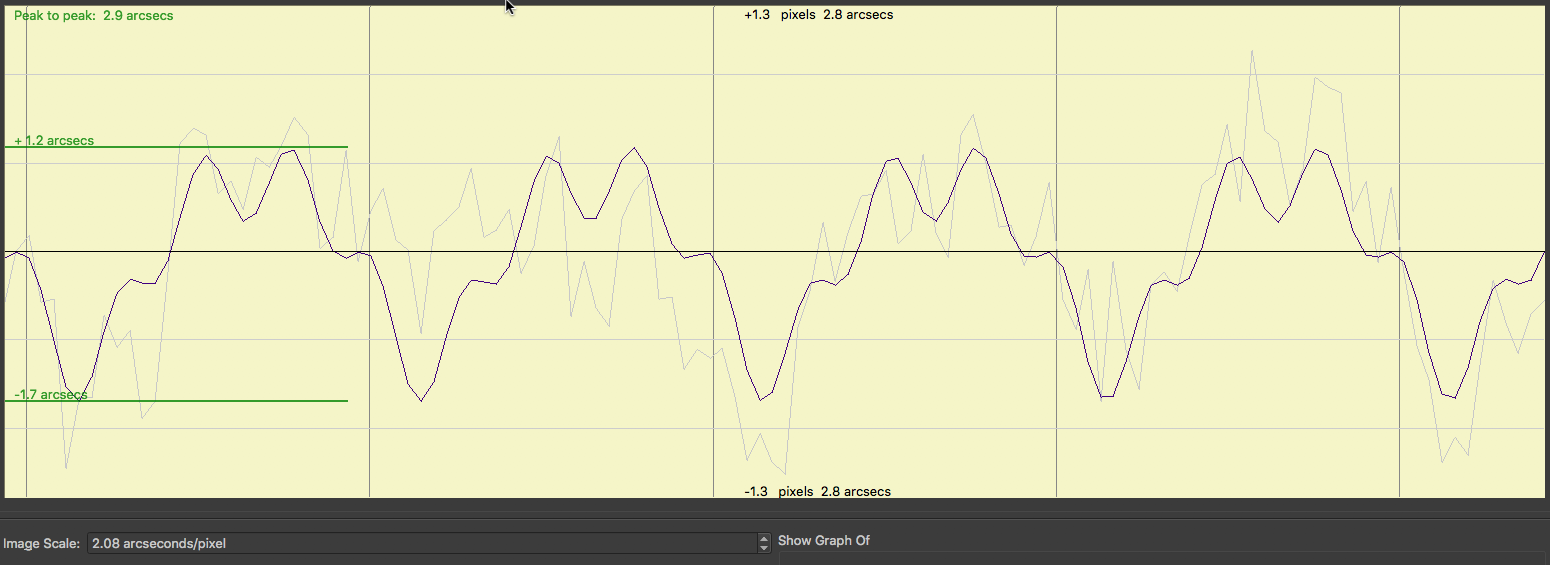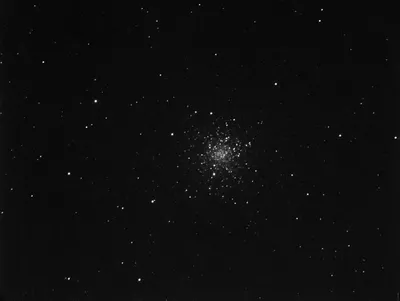First round, new Periodic Error analysis and correction
Wednesday, July 3, 2019
Continuing from last night – now that polar alignment is close, I’ll do a first pass of Periodic Error analysis.
First, with all corrections off (no PEC, TPoint, ProTrack, or guider relays), I collected 4 worm rotations’ worth of tracking data. Plotting this with TheSky’s PEC analysis, I get the following:
Peak-to-peak error, completely uncorrected, is 6.8 arc-seconds. This is within spec (7 arc-seconds) for this mount, for the first time – so this is good news, although I think the mount can do still better.
Using this data to program a Periodic Error Correction curve into the mount, I then did another 4-cycles worth of data collection, this time with PEC running.
Corrected Periodic Error is 2.9 arcseconds peak-to-peak. That’s good, and I feel good about the improvements that the maintenance has generated. But I’m left with a few questions:
- Most important, why the corrected PE isn’t even better than that. A good, pure, periodic error should be almost completely eliminated by PEC. This wasn’t. (I forgot to make note of my seeing conditions – perhaps this represents “chasing seeing” and is a good as it could have been? More study needed.)
- This makes me think that the error in the uncorrected data isn’t entirely composed of repeating periodic error, but rather that there are other factors still being injected.
On my next clear night, I’ll re-check the tightness of the pier mounting bolts, re-check equipment balance, re-check spring plunger settings, then do a further refinement of TPoint-ProTrack and polar alignment. We’ll see what that does and, if the data are still puzzling I’ll look for other causes such as loose connections in optical chain.
Meanwhile, a few unguided test exposures with PEC and ProTrack running, just for fun. These are all single 60-second exposures, binned 2×2, PEC running but no guiding, and corrected by dark and bias frames (no flats).
Since I was pointed right next to it for testing purposes, I started with M10. Ok, the framing isn't very artistic – this was a test.
Pretty nice, unguided. That’s only a 60-second exposure, and the very slight star elongation I can see would no doubt get worse with a longer exposure. It’s tempting to just throw guiding at it – but I want unguided performance to be as good as I can get it first.
Next, not far away in the sky, M12.
And, just to try something on the other side of the meridian, M27.
In all of these test photos, you can see the slight star elongation goes left-to-right, almost precisely along the horizontal axis. Since the camera was rotated with polar North up, within a small fraction of a degree, this means the horizontal axis in the image corresponds almost exactly to Right Ascension. So this elongation still corresponds to RA: RA error, which is likely, but not necessarily, Periodic error.
There was also substantial Dec drift during my data gathering. This doesn’t affect PE, but leaves me wondering why. I’m guessing not-yet-perfect polar alignment is a factor.
A few days of clouds and thunderstorms are now forecast, so more testing later.





